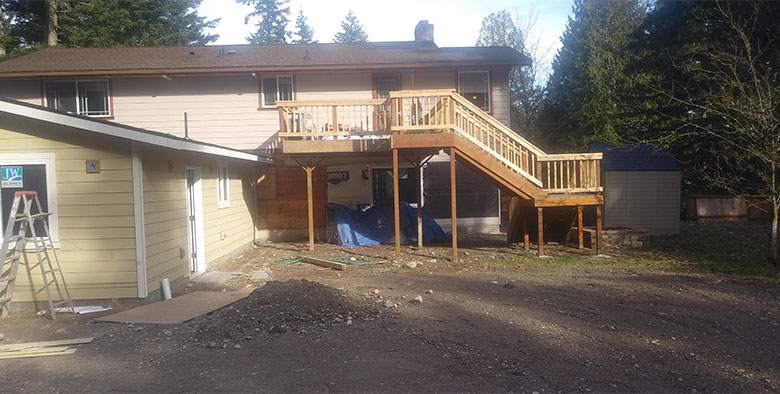Patios aren’t destroyed in a day. What breaks them down is slow, unnoticed change. Shifting ground, creeping roots, and small puddles become bigger trouble as time passes. Even the most solid patio gives way to silent wear without regular upkeep. It doesn’t make noise. It doesn’t always look bad at first. But when the damage is obvious, the fix isn’t small.
Cracks: Silent Signals of a Bigger Problem
Tiny cracks don’t seem like much. They form, they grow, and they spread. What they signal is deeper stress. Left alone, they create openings for water, roots, and instability.
Why do they form?
- Ground movement below the surface
- Weak base compaction
- Freezing and thawing cycles
- Old or poor-quality mortar
What they lead to:
- Loose or rocking pavers
- Tripping hazards
- Surface breakage
- Uneven footing
Drainage That Slowly Breaks the Base
Water never waits. It starts working underneath if it doesn’t flow away from the patio. Over time, water softens the foundation, erodes the soil, and wears out joints.
Common signs of drainage failure:
- Puddles that don’t dry up
- Wet patches at corners or edges
- Moss or algae between stones
- Surface stains that return often
Hidden effects:
- Base washout
- Weak joints
- Shifting stones
- Soil collapse near edges
Soil Movement That Pulls Everything Apart
When the ground under your patio moves, the whole surface reacts. Dry spells, floods, or improper installation can all trigger soil shifting.
You’ll notice:
- Sunken areas forming in the middle
- Tilted or slanted surfaces
- Gaps along the patio edges
- Wobbling stones or bricks
What does it mean long-term?
- Gradual collapse of entire sections
- Constant re-leveling or repairs
- Difficulty maintaining a level surface
Tree Roots That Break Without Warning
Tree roots don’t ask permission. They push under and around everything, and patios are no exception. It might take years, but the damage happens fast once they’re under the base.
Warning signs:
- A few lifted pavers in one spot
- Cracks with a curved or rising pattern
- Sudden bumps under the foot
- Stones pushed apart gradually
What follows:
- Loss of base support
- Breaks in joints
- Trapped water under the surface
Weather That Wears Things Down Year After Year
Rain. Heat. Snow. Wind. The cycle keeps repeating. Every season leaves its mark, especially if the patio wasn’t built with long-term exposure in mind.
Look for:
- Flaking, chipping, or crumbling on the surface
- Color fading in spots that get more sun
- Discoloration from mold or moisture
- Cracks near drainage paths after storms
Long-term risks:
- Material weakness
- Surface erosion
- Reduced grip or traction
- Hard-to-clean stains
Weeds That Widen Every Gap
Weeds don’t just grow—they take over. What starts as a little green in the joints becomes a sign of deep-rooted problems. Their roots push down and out, opening up space for more trouble.
Common clues:
- Green growing through paver joints
- Loose sand between stones
- Ants or other bugs gathering
- Joint material lifting or falling out
Impact over time:
- Loosened stones
- Accelerated crack growth
- Soil disturbance under the patio
Fading That Changes More Than Just Color
Sunlight bleaches color. Water stains the rest. And once fading begins, the surface starts breaking down too. It might look aged, but fading also affects strength.
Typical signs:
- Patchy or uneven surface tones
- Dull, chalky feeling when touched
- Spots that stay darker when wet
- Discoloration under furniture or decor
Consequences:
- More moisture absorption
- Weakened top layer
- Loss of visual appeal and structural surface
Edges That Give Out First
The edges take the most abuse. They’re exposed to runoff, foot traffic, and ground erosion. The rest of the patio starts shifting out of place when the edges fail.
Signs of trouble:
- Pavers slipping out of alignment
- Gaps between the outer row and the surrounding ground
- Erosion or washout on the sides
- Grass and roots growing into the cracks
Eventually:
- Full edge collapse
- Stone movement inward or outward
- Surface instability
The Real Cost of Letting Things Slide
None of these problems happens overnight. They start slow. Quiet. But every year you wait, the damage digs in deeper. Fixes get more expensive. Rebuilding becomes unavoidable. All because the first warning signs went unnoticed—or ignored.
The most common regrets:
- Not sealing joints early
- Skipping small crack repairs
- Ignoring the pooling water
- Thinking, “it’s not that bad yet”
Routine checks and small fixes do more than save money. They preserve your outdoor space. They keep your property in shape. And they help your patio last the way it should.
Conclusion
At Bergquist Designers & Builders LLC, we know how small issues grow big in outdoor living areas. The key isn’t constant upkeep—it’s smart timing. Spot the silent changes, take early action, and avoid the cost and stress of full rebuilds. Whether checking root movement, improving drainage, or starting a fresh porch construction, we focus on what keeps everything in place longer.
If your patio shows any of the signs above, don’t wait until it’s too far gone. A solid structure is still possible—with the right attention at the right time.


